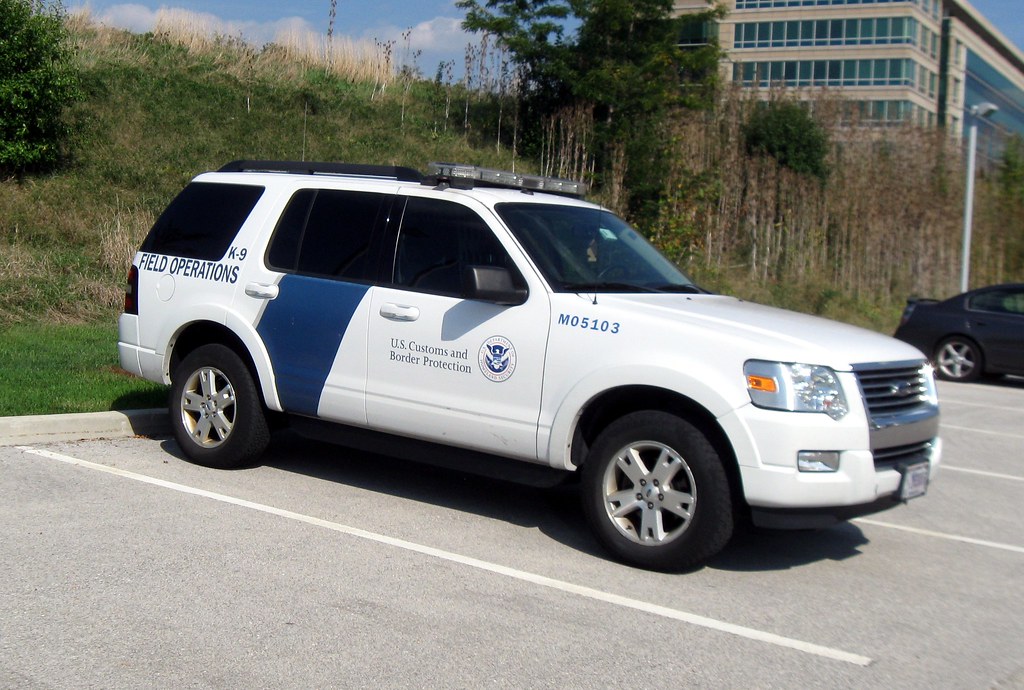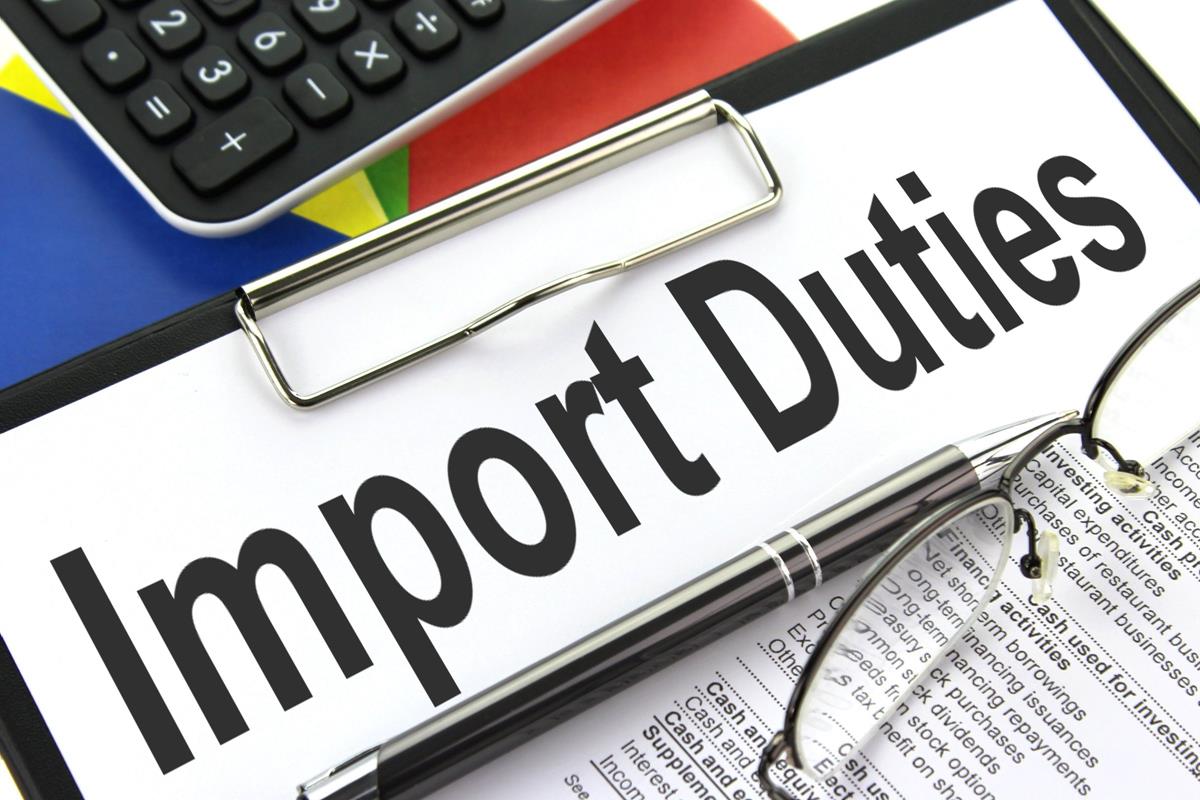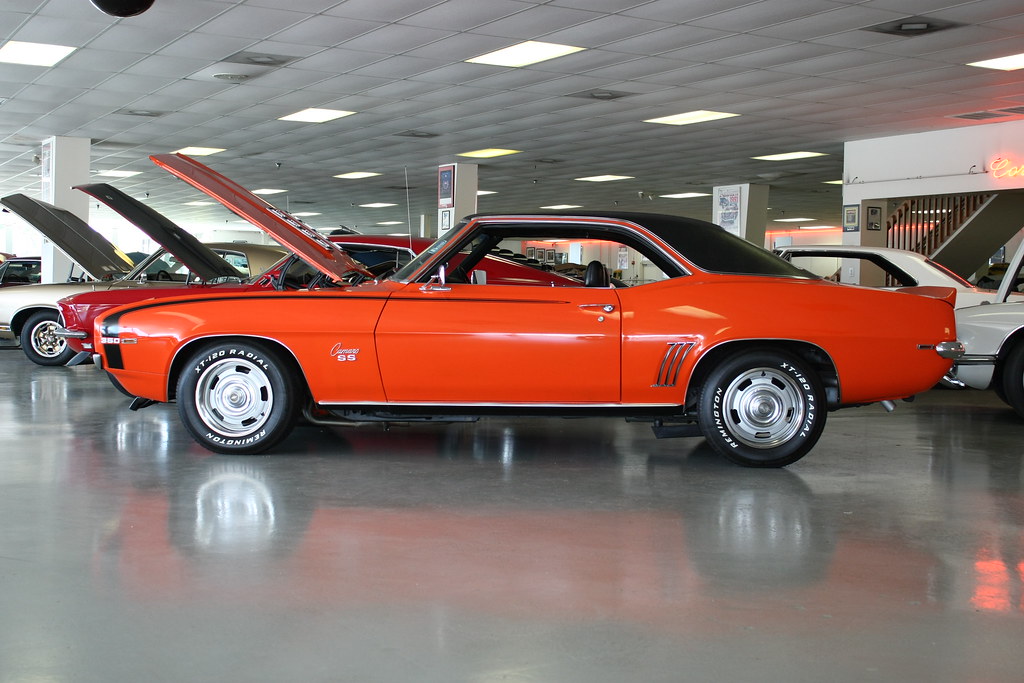
Importing a car from a foreign market can appear to be an exciting opportunity, potentially offering access to unique models, superior specifications, or even favorable pricing not available through domestic channels. However, the path from acquiring a vehicle abroad to successfully registering and driving it within the United States is paved with intricate regulations, extensive documentation requirements, and a spectrum of potential costs. Without a comprehensive understanding of this process, what begins as an appealing venture can swiftly evolve into a complex, time-consuming, and unexpectedly expensive undertaking.
The U.S. government, primarily through the U.S. Customs and Border Protection (CBP) and various other federal agencies, has established a detailed framework to govern the entry of all goods, including vehicles, into the country. These regulations serve multiple purposes: protecting domestic industries, ensuring public safety and environmental standards, and facilitating orderly international trade. For individual consumers or small businesses importing a vehicle, these translate into a series of mandatory checks, from verifying environmental compliance to correctly classifying the vehicle and navigating a range of financial obligations.
This in-depth guide is meticulously designed to demystify the car importation process, providing you with objective and actionable insights to make informed decisions. We will systematically break down the critical components of importing a vehicle, focusing on the key regulatory bodies, essential financial considerations, and the required documentation. Our aim is to empower you, the consumer, to approach car importation with confidence, ensuring a smoother, more predictable, and ultimately more successful experience.

1. Understanding Regulatory Agencies and Specific Vehicle Requirements
When contemplating the importation of a car, one of the foundational steps involves identifying and understanding the specific U.S. regulatory agencies that oversee vehicles and engines. The import process is not solely managed by the U.S. Customs and Border Protection (CBP); rather, it involves a network of Partner Government Agencies (PGAs) each responsible for enforcing particular safety, health, and environmental standards. A thorough understanding of these initial requirements is critical, as overlooking them can lead to significant delays, unexpected expenses, or even the outright denial of entry for your imported vehicle.
For vehicles, the U.S. Environmental Protection Agency (EPA) is a particularly relevant authority. The provided context clearly states, “For information on requirements related to the environmental protection, such as for chemicals, vehicles and engines, pesticides, you will want to consult the EPA Requirements for Importers and Exporters.” This directly indicates that any imported car will be subject to EPA regulations, which encompass stringent emissions standards and fuel efficiency mandates. Ensuring that your prospective vehicle either meets these U.S. standards *prior* to shipment or can be cost-effectively modified to do so is an absolutely paramount pre-importation step. Remedial modifications after arrival can prove prohibitively expensive.
While the context details the U.S. Food and Drug Administration (FDA) for human/veterinary drugs, biological products, medical devices, food, cosmetics, and radiation-emitting products, and the U.S. Department of Agriculture (USDA) for plants, animals, and animal products, these agencies typically do not have direct jurisdiction over standard car imports. However, the comprehensive regulatory landscape highlights the need for due diligence across all potential touchpoints. The Consumer Product Safety Commission (CPSC) is mentioned for “safety requirements for consumer goods,” and while a car is a complex product, individual components or accessories, particularly those with hazardous materials or unusual design, might fall under CPSC scrutiny.
Furthermore, gaining a broad understanding of import requirements can start with resources like the “Basic Importing and Exporting issued by the U.S. Customs and Border Protection (CBP).” For insights into specific export market requirements for inspections, licensing, and certificates, the Commerce’s Country Commercial Guides and USDA’s GAIN reports are recommended. While these resources are more commercially focused, they illustrate the layered nature of international trade regulations. It is also important to note that “some markets, including the United States, require import licenses for specific products.” While a general import license for cars is not explicitly stated in the context, this serves as a reminder to meticulously verify any specific licensing requirements for vehicle imports into the U.S., adding another layer to initial compliance checks.
Read more about: Beyond the Hype: Unpacking the Myriad Reasons Why Self-Driving Cars May Never Truly Work

2. Deciphering Import Duties and Value-Added Taxes
The total financial outlay for importing a car extends significantly beyond its purchase price. Importers must accurately anticipate and budget for a range of duties and taxes, which can substantially impact the overall acquisition cost. Fundamentally, “Customs duties are taxes you pay when importing goods across international borders.” These duties are strategic tools employed by nations “to protect their domestic markets, generate additional revenue, and monitor the movement of goods across borders.” Grasping these core principles is essential for developing a precise financial plan and avoiding unforeseen expenses.
For any goods, including a car, destined for the U.S., “you need to file an entry with US Customs and Border Protection (CBP), informing them that you’re bringing goods into their country.” During this process, customs officials will request critical information such as the “country of origin, type of goods, HS code, price, weight of the cargo, and freight value.” The actual customs duties levied on your vehicle will be meticulously calculated based on these precise details. This underscores that duty assessment is a tailored calculation, not a one-size-fits-all charge, making accurate declaration imperative.
The provided context also introduces “Excise duties on imports” and “VAT on imports,” explicitly detailing their application when “goods are imported into the EU.” For instance, “These excise duties must be paid when the goods are imported into the EU” for specific items like tobacco and alcoholic beverages, and “Anyone who buys goods from abroad must report VAT.” While these specific regulations pertain to imports *into* the European Union, the underlying concept of specialized consumption taxes (excise) and value-added taxes (VAT) is a global phenomenon. U.S. importers should be aware that similar or equivalent forms of consumption taxes may apply at state or federal levels, even if designated differently from EU VAT.
Crucially, the context highlights that when importing goods “from countries outside the EU into the EU,” “customs duties must be paid on goods imported from the United States, regardless of whether they concern businesses or individuals.” This illustrates the universal reality that cross-border trade, particularly with non-free-trade-agreement countries, almost invariably involves the payment of customs duties. Consequently, a U.S. importer bringing a car from regions such as Europe, Asia, or other non-North American trade partners should fully expect to incur specific customs duties calculated upon the vehicle’s entry into the United States, adding a significant component to the overall cost.

3. The Harmonized System (HS) Code: Your Vehicle’s Global Identifier
Central to the accurate assessment of customs duties and the streamlined clearance of your imported car is the Harmonized System (HS) Code. This is not merely a bureaucratic identifier; it represents a globally recognized, standardized nomenclature designed to classify products uniformly across international borders. The context emphasizes that “The HS code facilitates global trade by standardizing the classification of goods through unified categories. Each product is assigned an HS Code, simplifying the identification process and helping customs authorities determine applicable duties and fees.” For a vehicle, pinpointing the correct HS code is a non-negotiable step that directly influences the tariff rate applied.
The profound importance of the HS code cannot be overstated, as “While the value of shipments plays a significant role in determining customs duties, the product’s HS code is also a critical factor.” Misclassifying your car—whether through oversight or error—carries substantial financial risks. The context explicitly warns, “Using the incorrect HS code and misclassifying goods can result in significant punitive duties.” This underscores the necessity for meticulous accuracy in this area to prevent costly fines, customs audits, and protracted delays in the vehicle’s import process. Diligence in HS code verification is an investment in a smoother transaction.
The U.S. further refines this international system through its “Harmonized Tariff Schedule (HTS),” which is “a system used by the US to fix tariff rates against different categories of goods.” While the global HS code provides a foundational classification for your car, the HTS code specifically dictates the precise tariff rate applicable for its entry into the U.S. It is customary for the supplier to include the HS code on the commercial invoice and all other pertinent entry documents. However, as the importer, you bear ultimate responsibility for accuracy. Therefore, “It’s best to confirm the HS code with your broker by providing them with a thorough description of your goods” to ensure absolute correctness.
Beyond tariff determination, the HS code serves a broader regulatory purpose. It helps customs authorities identify if your imported vehicle is subject to any specific regulations, such as those enforced by the EPA for emissions, or if it qualifies for preferential duty treatment under existing trade agreements between the U.S. and the country of origin. For example, specific tariffs or duty benefits might apply if the car originates from a nation with which the U.S. maintains a Free Trade Agreement. Its multi-faceted utility makes the HS code an indispensable element in navigating the complexities of international vehicle importation.

4. Navigating Special Duties: Anti-Dumping and Countervailing Measures
Beyond the standard customs duties, importers, particularly those bringing in a vehicle that might be part of a broader commercial import trend, must be acutely aware of the potential for “additional duties” such as Anti-Dumping (AD) and Countervailing Duties (CVD). These are not standard tariffs but rather targeted measures “designed to protect U.S. industries from unfair trade practices.” While an individual car import might seem distinct from mass commercial shipments, understanding these duties is crucial for a complete and accurate financial projection, especially if the vehicle model is also widely imported.
“Anti-Dumping (AD) Duties are imposed on goods imported at a price lower than their normal value, typically the price in the exporter’s domestic market.” This practice, known as dumping, can severely “undercut local businesses by flooding the market with cheaper products.” Should a particular make or model of car from a specific country be found to be sold in the U.S. at a significantly undervalued price, an investigation could result in AD duties being levied, directly impacting the importer’s total cost. Similarly, “Countervailing Duties (CVD) target goods that receive government subsidies in the producing country, allowing them to be sold at artificially low prices on international markets.” Such subsidies can “distort fair competition and harm domestic industries” in the importing country.
It is vital to recognize that both AD and CVD are applied only “after a thorough investigation by the U.S. Department of Commerce and the International Trade Commission.” These official bodies are responsible for determining “if dumping or unfair subsidies have occurred and if they cause injury to the U.S. industry.” The context clarifies that “Only specific commodities identified within these investigations are subject to AD/CVD.” While the provided examples do not explicitly name cars, the underlying principle applies broadly to any goods, including vehicles, that are determined to benefit from such unfair trade practices. Staying diligently informed about current investigations and existing AD/CVD orders is thus a critical aspect of risk management for importers.
Moreover, the context highlights the “USTR Section 301 duties,” noting that “Many products imported from China are subject to these additional duties, which range from 7.5% to 25%.” These duties were imposed “in response to trade practices deemed unfair, affecting a wide range of goods.” If your imported car, or any substantial components thereof, originate from China, these additional duties could potentially apply, adding a significant percentage to your overall cost. Importers are strongly advised to “carefully check if their products fall under these categories, as it significantly impacts the total cost of importing goods from China.” Given the dynamic nature of “anti-dumping rules,” the recommendation to “consult your broker for current regulations and estimates” is particularly salient for navigating these complex, variable charges.

5. Essential Documentation for Customs Clearance: The Commercial Invoice
Having addressed the regulatory framework and potential duty structures, the practical aspect of documentation assumes paramount importance. “The entire US customs clearance process mainly involves proper documentation and timely paperwork.” Among the various documents required, the commercial invoice stands out as undeniably one of the most crucial, serving as a comprehensive and legally binding record of your imported car’s transaction. “Every shipment comes with a commercial invoice signed by the shipper or seller. You cannot ship your freight without this document.” This foundational document provides U.S. Customs with the granular details necessary to accurately process your vehicle’s entry.
The commercial invoice is far more than a simple bill of sale; it is a formal declaration of the goods being imported and their declared value for customs purposes. It “has all the necessary details related to the shipment as required by the Tariff Act in the US.” To ensure a seamless clearance for your vehicle, meticulous preparation and thorough review of this document are absolutely essential. Key information points that must be precisely detailed include the exporter/shipper’s complete name and address, the seller’s name and address (if distinct from the exporter), the consignee’s name and address, and the buyer’s name and address (if different from the consignee). A unique “Invoice Number” and the “Date of Shipment” are also fundamental.
Further critical data points required on the commercial invoice for your car include the specific “Country of Origin,” identifying where the vehicle was produced or manufactured, and a “Detailed Description of Goods.” For a vehicle, this description must be exceptionally precise, encompassing “material composition, intended use, grades, quality, and, if applicable, part numbers” for major components. The “Quantity of Goods” (e.g., “1 unit” or “one passenger automobile”), the “Weight and Measurements of Goods” (both net and gross weights of the vehicle), and the “Value of Goods,” including “the transaction value of the goods, including the method used to determine the value if the transaction value is not available,” are all indispensable for accurate duty assessment.
Completing the financial and logistical overview, the commercial invoice must also clearly state the “Total Invoice Value” (which aggregates the item price, freight, insurance, and packing costs), the “Currency in Which Transactions are Done,” and the “Terms of Sale (Incoterms)” such as “Free on Board (FOB)” or “Ex-Works (EXW),” which delineate the responsibilities of both buyer and seller. Critically, the “HS Code (Harmonized System Code)” must be accurately listed, as previously discussed, to determine the correct tariff rate. “Shipping Terms,” the “EIN (Employer Identification Number) or SSN (Social Security Number)” of the U.S. consignee/buyer, the “Origin of Shipment and Port of Entry,” and “All Charges Incurred” (including insurance, freight, packing) are also vital. Finally, a “Declaration by the Exporter” certifying the invoice details are true and correct is mandatory. It is essential to remember, “Your invoice must be in English or accompanied by an English translation. Each shipment also requires a separate invoice.” Diligently double-checking all details against your official identification is a simple yet absolutely critical step to prevent discrepancies.
Mastering the import process requires not only a foundational understanding of regulations and duties but also a meticulous approach to the operational and financial intricacies that follow. With the groundwork laid in understanding initial compliance and the crucial commercial invoice, we now delve into the remaining essential documentation, the invaluable role of customs brokers, the full spectrum of import fees, and critical considerations for accurate customs filing. This section aims to equip you with the knowledge to navigate the practicalities, empowering you to manage your vehicle’s journey into the U.S. with confidence and precision.

6. Beyond the Commercial Invoice: The Bill of Lading as Your Transport Contract
While the commercial invoice details the transaction, another equally vital document for the physical movement and entry of your imported car is the Bill of Lading (BoL). This document serves multiple critical functions: it acts as a receipt for the goods issued by the forwarder or vessel operator, a contract between the shipper and the carrier for the transportation of the freight, and crucially, as evidence of the right to make an entry into the U.S. as required by U.S. Customs and Border Protection (CBP). Often referred to simply as BoL, B/L, or Waybill, it’s a foundational piece of paperwork for ocean shipments.
For any importer, understanding the Bill of Lading is non-negotiable. It formally acknowledges that the carrier has received the vehicle in good condition (or notes any discrepancies) and commits to delivering it to the specified consignee at the destination. The importer must submit this BoL while officially filing an entry with the CBP, making it a gateway document for your car’s physical entry into the country. Without a correctly issued and presented Bill of Lading, your vehicle’s journey through customs will inevitably face significant roadblocks.
It is worth noting that for shipments arriving by air, a similar document known as an Air Waybill (AWB) is used, serving the same core purposes of receipt, contract, and proof of right to entry. Regardless of the mode of transport, these documents are indispensable. Their accuracy ensures that your car can be properly tracked, handled, and ultimately cleared by customs, aligning all parties involved in the logistics chain.

7. Proactive Compliance: Importer Security Filing (ISF) and Arrival Notification
Beyond the core transport documents, importers must engage in proactive filings and be aware of notifications that signal critical junctures in the import process. One such imperative is the Importer Security Filing (ISF), often known as ISF 10+2. This form must be submitted by importers or their assigned brokers to the CBP at least 24 hours before the cargo is loaded onto the vessel for ocean shipments. It contains essential details related to the freight, allowing CBP to conduct security risk assessments prior to the vessel’s departure.
The ISF is not merely a formality; it is a vital tool for national security and trade facilitation. CBP utilizes the information provided in the ISF to determine whether the cargo needs further inspection upon arrival in the U.S. A timely and accurate ISF filing is paramount to preventing costly delays or even denial of entry. Failure to file the ISF on time can result in significant penalties, underscoring the importance of adhering to this pre-loading requirement.
Once your imported vehicle physically arrives at the designated U.S. port, the carrier issues an Arrival Notice. This crucial notification is sent to the consignee, the notify party, or directly to your customs broker. It serves as a signal that your goods have arrived and are ready for the subsequent steps in the customs clearance process. The arrival notice contains important details about the shipment and its precise location, empowering your customs broker to initiate the release procedures and arrange for further transport of the vehicle within the United States. Furthermore, for streamlined processing, all entry documents must be filed through the Automated Broker Interface (ABI) within the Automated Commercial Environment (ACE), the central system CBP uses to manage and track imports.

8. Specialized Documentation: Tailoring Your Import Paperwork for Specific Vehicles
While the commercial invoice, Bill of Lading, and ISF are universally required for most imports, certain types of goods—and indeed, specific vehicles—may necessitate additional, specialized documents to clear U.S. customs. These supplementary forms ensure compliance with the specific mandates of Partner Government Agencies (PGAs) that oversee particular product categories. As a conscientious importer, preparing for these potential extra requirements can prevent unexpected delays and complications.
For instance, if your imported car has specific components or features that fall under the purview of agencies like the U.S. Environmental Protection Agency (EPA) for emissions, or the Consumer Product Safety Commission (CPSC) for safety standards related to certain parts, you may need to file specific approval forms from these PGAs. The context explicitly mentions that “Approval forms from Partner Government Agencies (PGAs) such as FDA (for food items), USDA (for agriculture products), CPSC (for hazardous equipment or chemicals), etc.” may be required. While FDA and USDA typically don’t directly oversee vehicles, the principle of PGA approvals is crucial to grasp for comprehensive compliance.
Another important specialized document is a Power of Attorney if you elect to use the services of a customs broker. This legal document formally grants the broker the authority to facilitate the customs clearance process on your behalf, signing documents and interacting with CBP. It’s an essential step to empower your chosen expert to act as your agent. It is also important to remember that all entry documents, whether standard or specialized, must be filed with CBP within 15 calendar days from the arrival of your shipment. This strict deadline reinforces the need for meticulous preparation and proactive engagement with the documentation process.

9. The Guiding Hand: Deciding on a Customs Broker for Seamless Entry
The sheer volume and complexity of documentation, regulations, and ever-changing trade laws can be daunting for even experienced importers. This is where the strategic decision of whether to engage a customs broker becomes paramount. While legally you are not required to hire one, the intricate landscape of U.S. customs often makes it a wise, cost-effective investment to secure professional assistance. Choosing to go it alone can swiftly lead to errors, delays, and unexpected costs that far outweigh a broker’s fee.
A customs broker is a highly specialized professional, certified by CBP, who is an expert in navigating the intricacies of U.S. customs clearance. They act as your representative, meticulously handling the necessary paperwork, ensuring that your goods are properly declared, and verifying that all import activities adhere strictly to legal requirements. Essentially, they serve as a crucial intermediary, simplifying the complex documentation and regulatory hurdles that accompany international trade. Their expertise is invaluable for accurate classification of goods, liaising with various partner agencies, assisting with correct licensing, preparing and submitting critical documents, and facilitating the timely release of your cargo.
The benefits of hiring a licensed customs broker are substantial. You can avoid the significant hassle of learning and executing the complex U.S. customs clearance process yourself. Instead of communicating with numerous government agencies, you streamline interactions through a single, knowledgeable entity. This significantly reduces the chances of costly errors in paperwork, thereby mitigating potential extra fees and penalties. A broker substantially lowers your risk and responsibility related to customs, documentation, and international trading laws. Furthermore, you can often hire a broker on an ad-hoc basis, benefiting from their expertise without the overhead of a full-time employee, making it a flexible and highly beneficial solution for managing your imported vehicle.

10. The Full Financial Picture: Understanding Import Fees and Avoiding Costly Penalties
Beyond the purchase price and standard duties, importing a car involves a spectrum of potential fees and charges that can significantly impact your total cost. Understanding these financial components and the consequences of non-compliance is crucial for accurate budgeting and avoiding unpleasant surprises. When shippers discuss “paying for customs,” they are often referring to various charges remitted to CBP, other government regulatory bodies, and intermediaries, which can be broadly categorized into clearance charges, customs duties, customs exam fees, and penalties.
Clearance charges represent fees incurred specifically for the process of clearing customs, often paid to CBP, partner government agencies, or agents like customs brokers. Key examples include the Merchandise Processing Fee (MPF), collected on most shipments at approximately 0.34% of the shipment value (with minimums and maximums), and the Harbor Maintenance Fee (HMF), levied on all ocean freight at 0.125% of the shipment value. The Importer Security Filing (ISF) fee also falls into this category for ocean shipments, alongside any applicable customs broker fees and Partner Government Agencies’ fees for specialized approvals. Additionally, you may need a customs bond—an insurance policy for CBP—required for general merchandise valued over $800 or for goods subject to restrictions by regulatory agencies like the EPA. These bonds, whether single-entry or continuous-entry, assure timely payment of duties and taxes, and their cost varies based on shipment value or previous annual duty payments.
While standard customs duties were covered in Section 1, it’s vital to reiterate their financial impact. These are the actual taxes levied by the government on the goods you’re importing, which can sometimes be as high as 30% of your total shipment value. The specific duties owed are contingent on the HS classification of your vehicle and its country of origin. While trade agreements might offer nil or low customs duties, certain categories of goods, like specialized vehicle components, could be subject to extra taxes. Unlike clearance charges, exact estimates for duties can be more challenging to obtain in advance, though duty calculators or experienced suppliers can provide ballpark figures.
Beyond predictable charges, importers must account for potential customs exam or inspection fees. While uncommon, affecting only 3-5% of shipments, customs agents may inspect your cargo if they suspect improper documentation or as part of random screenings. These fees, which can range from approximately $300 for an X-ray to $1,000 or more for intensive examinations requiring container opening, cover the cost of inspection, transport, and storage. There’s little an importer can do once a shipment is selected for examination, highlighting the importance of prevention through meticulous paperwork and partnering with trusted logistics providers to minimize risk.
Finally, a critical aspect of managing import costs is understanding and actively avoiding penalties. Adherence to the numerous U.S. customs regulations is non-negotiable; any errors or non-compliance can result in significant financial repercussions. For example, failing to file an ISF on time can accumulate fines up to $6,000, and applying an incorrect HS code can lead to heavy penalties. The Harmonized Tariff Schedule (HTS) sets tariff rates based on the HS code, making accurate classification directly tied to avoiding punitive duties. Similarly, overlooking Anti-Dumping (AD) and Countervailing Duties (CVD) compliance, especially given their frequent changes, can result in substantial additional tariffs. These added costs are entirely avoidable by working with experienced forwarders and brokers who ensure meticulous adherence to all legalities and proper filing protocols.
As you embark on the exciting journey of importing a car from abroad, remember that success hinges on meticulous planning, diligent documentation, and a proactive understanding of the entire process. From the initial regulatory checks to navigating the myriad of paperwork, strategically engaging with customs brokers, and comprehensively budgeting for all potential fees and penalties, each step contributes to a smoother, more predictable experience. Empower yourself with this knowledge, and transform what could be a complex endeavor into a successful acquisition, bringing your desired vehicle safely and compliantly to its new home.



